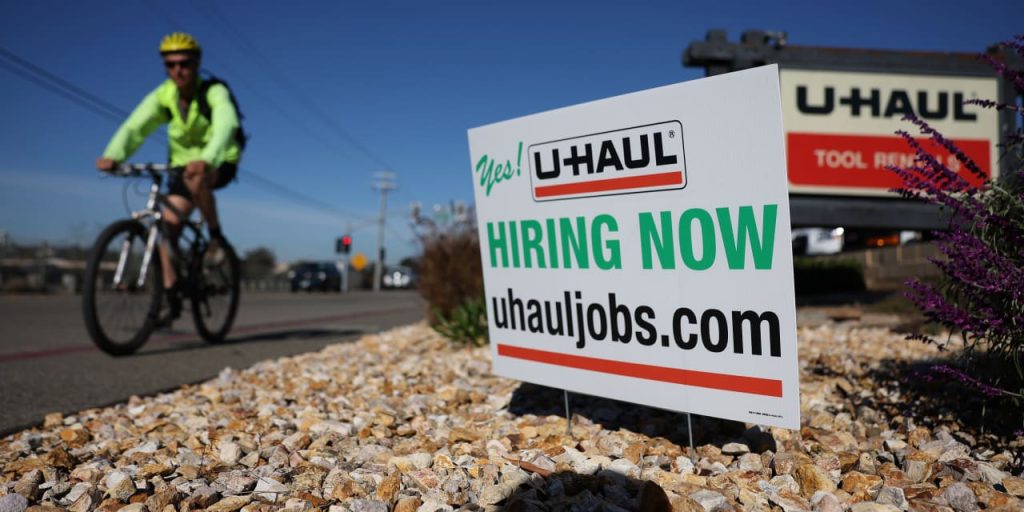The numbers: The number of Americans who applied for unemployment benefits last week jumped to a three-month high of 231,000, suggesting some softening around the edges of a strong U.S. labor market.
New jobless claims climbed 13,000 from a revised 218,000 in the prior week, the government said.
Claims still show a very low number of job losses and indicate the economy is stable, but businesses are hiring less and the labor market appears to have cooled off a bit.
Economists had forecast new claims in the week ending Nov. 11 to total 222,000.
Key details: New jobless claims fell in 53 states and territories that report these figures to the federal government. They rose in 20 other states, with most of the increase in Massachusetts and New York.
The number of raw or actual claims — that is, before seasonal adjustments — topped 200,000 for the second week in a row and also hit a three-month high. They had totaled less than 200,00 a month from late August until the end of October.
Unemployment claims typically surge above 300,000 and eventually go a lot higher when a recession is near.
The number of people collecting unemployment benefits in the U.S., meanwhile, rose for the eighth week in a row to seven-month high of 1.83 million.
The gradual rise in these so-called continuing claims is a sign it’s taking longer for people to find new jobs.
Big picture: Unemployment is still extremely low even though businesses are not hiring as many people. The economy is growing fast enough to encourage companies to retain most workers and avoid the sort of mass layoffs that contribute to a recession.
But jobless claims bear close watching because it’s one of best barometers of an improving or worsening economy. The recent increase could be a worrisome sign.
Looking ahead: “Initial jobless claims are still at levels consistent with relatively few layoffs, but they are creeping higher,” said lead U.S. economist Nancy Vanden Houten of Oxford Economics.
“The upturn in continued claims suggests that unemployed individuals are finding it more difficult to find new jobs, which would be consistent with a slower pace of hiring.”
Market reaction: The Dow Jones Industrial Average
DJIA,
and S&P 500
SPX,
were set to open lower in Thursday trading.
Read the full article here
